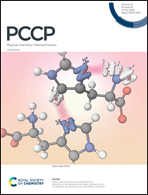SrFeO3−δ: a novel Fe4+ ↔ Fe2+ redox mediated pseudocapacitive electrode in aqueous electrolyte
Abstract
Pseudocapacitors offer both high energy and high power, making them suitable for grid-scale electrochemical energy storage to harness renewable energy produced from sun, wind, and tides. To overcome performance degradation in terms of cycling fading and lower specific capacitance values at high charge/discharge rates of electrochemical pseudocapacitors based on transition-metal oxides, perovskite-structured SrFeO3−δ was envisaged as a negative electrode that harnesses the Fe4+/3+ and Fe3+/2+ redox couple to deliver superior performance. SrFeO3−δ offers high specific capacitances of ca. 733 F g−1 at a scan rate of 1 mV s−1 and ca. 743 F g−1 at a current density of 1 A g−1 and demonstrates excellent cyclic stability over 2500 repeated cycles with capacitance retention of >92%, achieving 94% coulombic efficiency. The good cycling stability is attributed to the inherent metallic electrical conductivity of SrFeO3−δ and the fortuitous tendency of the robust cation framework structure to accommodate flexible oxygen content. The surface capacitive and diffusion-controlled contributions for capacitance are about ∼30% and ∼70%, respectively, at peak current and a scan rate equivalent to 1 mV s−1. The higher capacitance and stable performance make SrFeO3-δ an economical and abundant pseudocapacitive electrode.



 Please wait while we load your content...
Please wait while we load your content...